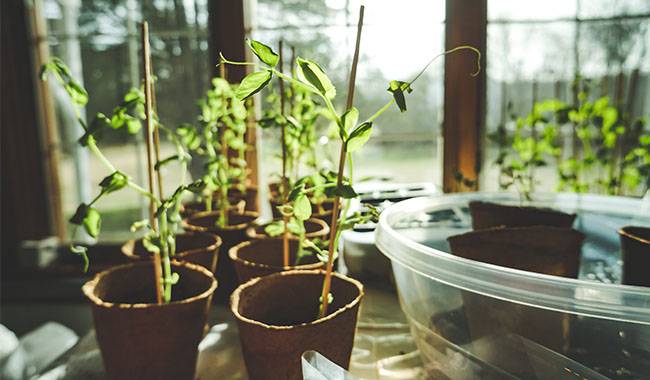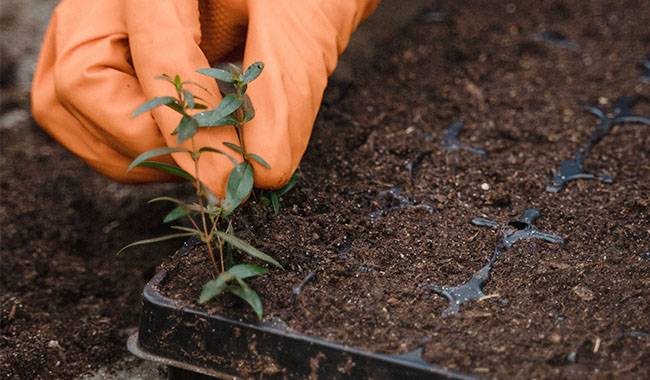
Every gardener knows how frustrating it is when a carefully sown seedling, a friendly shoot, sprouts and begins to grow. And suddenly the plants begin to curled leaves, turn yellow, and fall off.
Beginners are very distressed by this phenomenon, but experienced gardeners are not. After all, the fact is, “out of the blue” doesn’t happen. There are few reasons why the leaf plates of sprouts begin to curl.
In this article, we will tell you why this happens to our seedlings and how to deal with it.
The main causes of leaf curling in seedlings are:
- Uneven leaf plate development.
- Lack or excess of nitrogen, phosphorus, or potassium in the soil.
- Inadequate care.
- Influence of insect pests.
- The effects of various diseases.
Next step, consider in detail the causes of leaf curling in seedlings and talk about how to prevent it and what to do if the leaves are already curled.
THE UNEVEN DEVELOPMENT OF LEAF PLATES
More often observed in pepper seedlings and slightly less often in other crops. If the central veins of the leaf develop significantly faster than the leaf itself, this can eventually lead to leaf curling or deformation.
This is often only a temporary phenomenon; you can let it go for a while without disturbing the plant. The leaf blade should eventually develop into a fully developed leaf.
LACK OR EXCESS OF NITROGEN, PHOSPHORUS, OR POTASSIUM IN THE SOIL
Sprouts in particular react negatively to a lack of phosphorus and potassium in the soil. If the soil is deficient in these elements, the leaves of seedlings will begin to deform and curl, and as a result, they will become sluggish as if they have lost vigor due to lack of water.
Often, the leaves of seedling plants change color – they become lighter or, conversely, turn a dark purple hue. Excessive fertilizer in the soil is also not guaranteed to do any good, and this phenomenon can also cause leaf plates of young plants to curl.
PREVENTIVE AND CONTROL MEASURES
Thus, both a lack and an excess of fertilizer in the soil can adversely affect seedlings. To understand that it is in the fertilizer is the cause of leaflet curling, you must first assess the moisture content of the soil and then check very well if the leaf plates have spots caused by stings of sucking pests or fungal infections. And if you don’t find either of these, then it is likely that the cause of the phenomenon lies in the amount of fertilizer in the soil.
Too much is not very common. If this is the case, you will need to move the plants to normal soil without excess fertilizer, but the lack of fertilizer can be more easily dealt with by replanting.
Notice immediately that in most cases, seedlings do not have enough potassium. A deficiency of this element can cause leaf plates to curl. Potassium deficiency can be eliminated by making potassium sulfate dissolved in water at a rate of 8-10 grams per bucket of 50-100 grams of solution, or by making wood ash, which contains about 5% of potassium, as well as some elements important for the normal development of seedlings.
In order to make wood ash, first, loosen the soil very carefully, then wet it (preferably with a sprayer – for uniformity) and spread a layer of wood ash 2-3 mm thick.
IMPROPER CARE
This is a complex, multi-component cause that includes lack of light, too much or too little moisture in the soil, and incorrect cultivation temperatures. All of these causes can lead to leaf curling in young plants, and if not properly cared for overtime, seedlings can die.
PREVENTIVE AND CONTROL MEASURES
As for watering, you should keep the soil slightly moist and not allow the earth to over-dry or over-water. To understand overwatering the soil, you can see that the leaves on the seedlings are twisted and in the absence of moisture, the leaves react by losing dampness and the leaves curl downwards.
If there is a lack of moisture, you should water the plant as soon as possible, and if there is an excess – you need to raise the room temperature to 39-41°F (4-5°C), stop watering for a while, and loosen the soil daily to force the excess moisture to evaporate.
Light also plays an important role in plant life, so you should try to provide your seedlings with an average of a few hours of extra light in the morning and evening, in cloudy weather – and during the day as well.
The temperature should not be too high or too low, usually after sowing the temperature tends to stay at 75-77°F (24-25°C), after emergence (in order for the seedlings not to stretch and strengthen) it can be reduced to 60-65°F (16-18°C), but after a week – raised again to 70-71°F (21-22°C). At the same time, it is better to reduce the temperature of the room where the seedlings are growing at night by a few tens of degrees Fahrenheit.
PEST ATTACKS
Often, even seedlings grown at home can be attacked by pests. Aphids and spider mites can often be found on young seedlings. These individuals are almost universally present, affecting the vast majority of crops grown through seedlings, and they can cause damage at an early stage of plant seedling development.
Since both aphids and spider mites are sucking pests, the first thing you notice on the leaf disc is a red spot where the leaf has been punctured. Then the leaflet loses its toughness and curls up. While aphids are easy to spot with the naked eye, the spider mite is not so easy to spot, it usually inhabits the back of the leaf.
If you turn over the lining of the leaves, you can see the spider’s web, which is a sign of this pest. If you find it, there is no doubt that the plant is infested with kidney mites. If the leaves are heavily infested, the leaves of young seedlings may turn completely yellow and fall off in addition to the curled leaves.

PREVENTIVE MEASURES AND CONTROL
The pests not only cause curled leaf plates but also complete or partial death of seedlings, so they need to be controlled very aggressively. The use of “chemicals” in-home seedlings is not advisable and folk remedies are preferable.
For example, an onion husk infusion can help combat aphids and spider mites, which involves taking a cup of onion husk with a liter of boiling water and letting it sit for 24 hours. Then the solution must be filtered and the plants treated with it every 3-4 days until the pests disappear.
You can additionally treat the soil, for which you need to prepare a pink solution of weak manganese. If the treatment with onion shells fails, you should water with this solution. Use this solution carefully and not more often than once a week.
EFFECTS OF VARIOUS DISEASES
The most common is a fungal infection, which can manifest itself with excessive soil and air humidity and low nursery temperatures. The infection manifests itself in different ways, but usually as a spot on the leaf surface that changes color as the fungus matures and spores form.
The vitality of the fungal infection causes the leaves to curl, change color, and eventually dry out and die. A very common fungal infection of seedlings that causes leaf curling is root tip rot.
PREVENTIVE MEASURES AND CONTROL MEASURES
Let’s start with prevention – to prevent fungal infections from settling on seedlings, you should treat seedlings regularly (every ten days) with 1% Bordeaux mixture, but if there are signs of infection then you should treat seedlings with 2% Bordeaux mixture every five days.
In addition to the Bordeaux mixture, a fairly effective infusion combining garlic and onion can be used. For its preparation, you need to crush a few onion heads and 4-5 cloves of garlic in a container and pour 5 liters of water at room temperature, let it sit for a day, filter, and process the resulting infusion to damage the plants.
Usually, a nitrate solution is used, with which to treat diseased plants. To prepare a good quality solution, 150 grams of nitrate should be dissolved in ten liters of water, and the crusher of this solution should be treated every five days until the seedlings are restored.
All treatments are best combined with the inflow of fresh air into the room, i.e. by opening doors and vents and regularly ventilating the room where the seedlings are growing.
When picking fungus-infected seedlings, add a mixture of tobacco powder, carbonated lime, and wood ash to the soil, adding 5-7 grams of each substance per kilogram of soil.
If the seedlings have a slight fungal infection, a whey solution can be used, which can also be used to spray the affected leaves.
We hope that our tips on preventing and fighting curled leaves will help you to grow healthy seedlings and transfer them safely to a greenhouse or seedbed. And what about you, how do you combat this phenomenon? Share your experiences in the comments.







